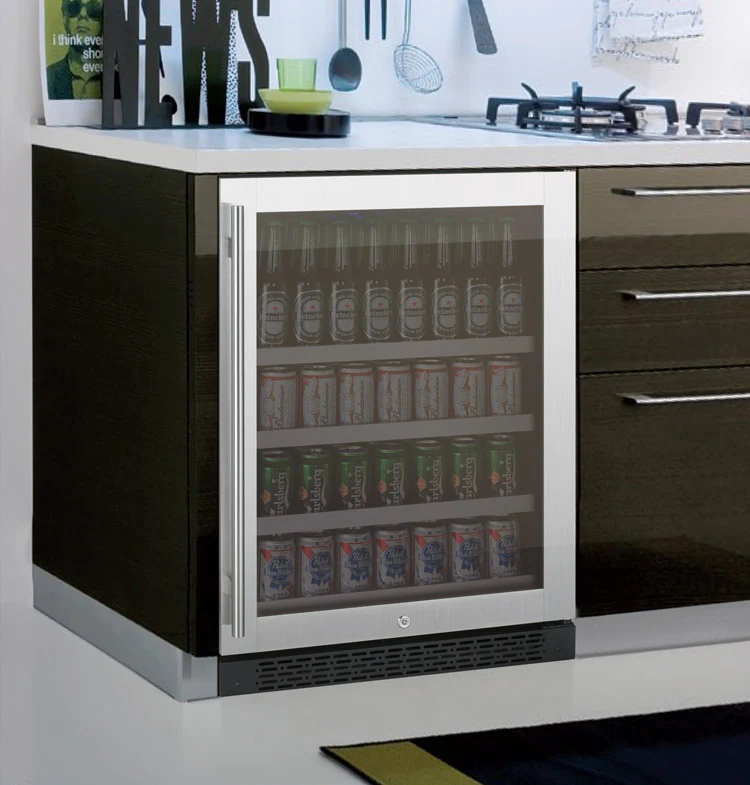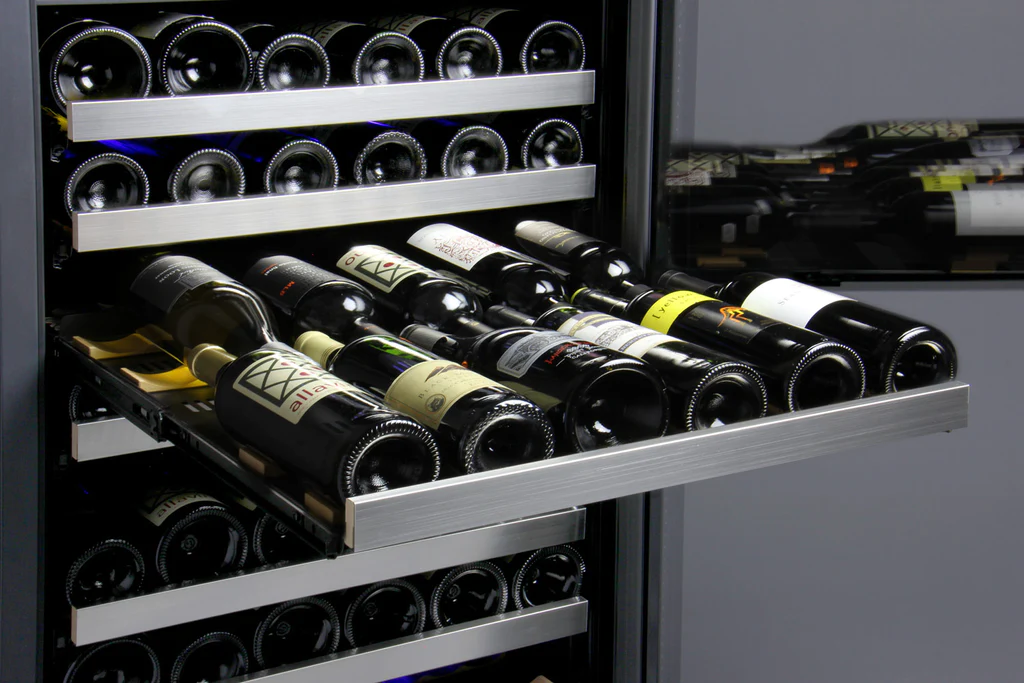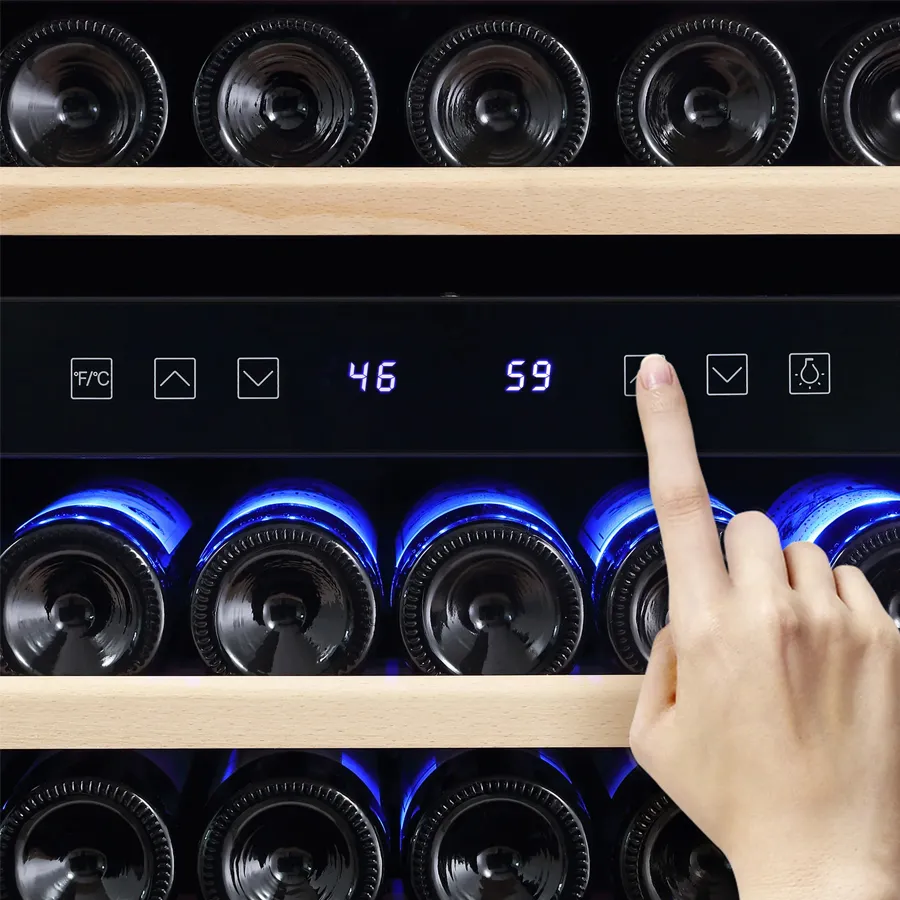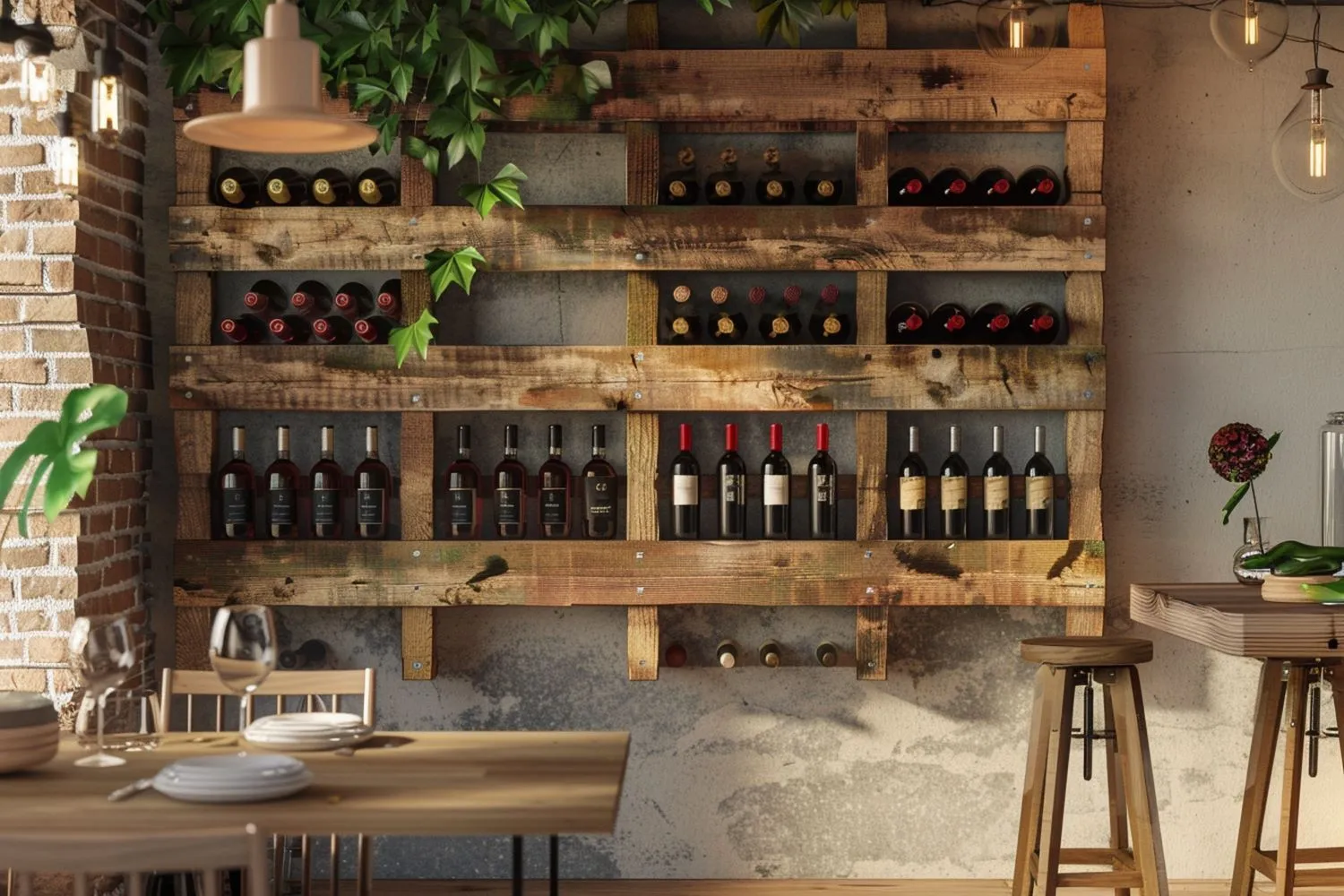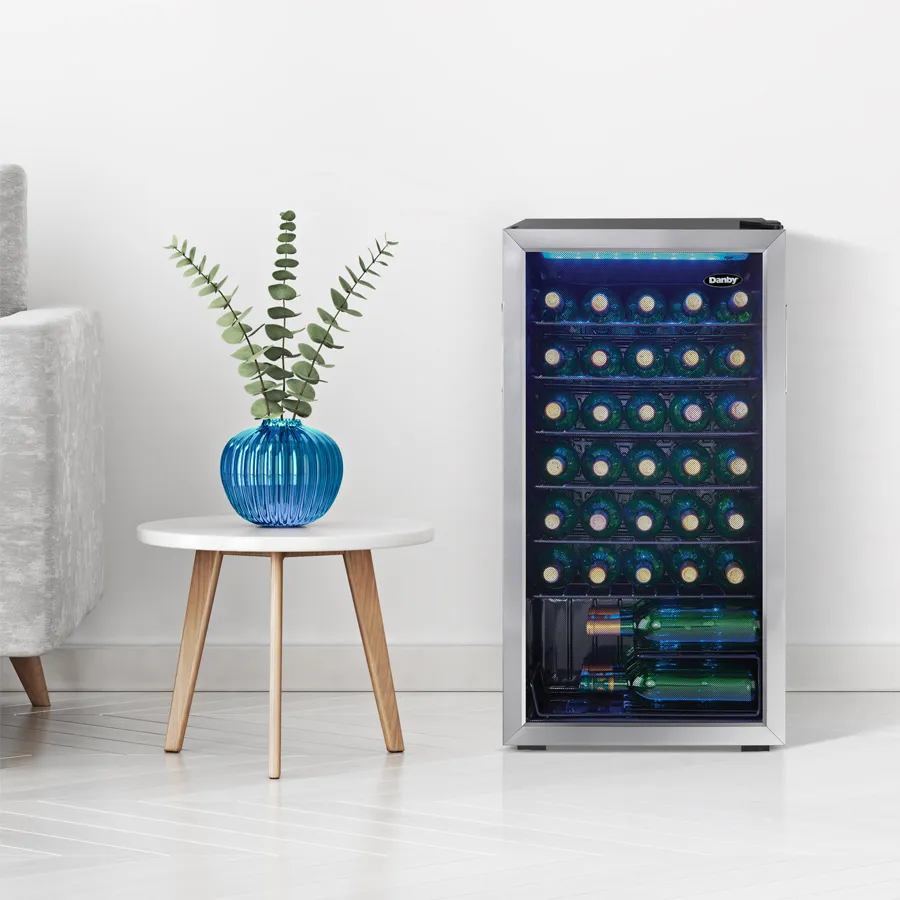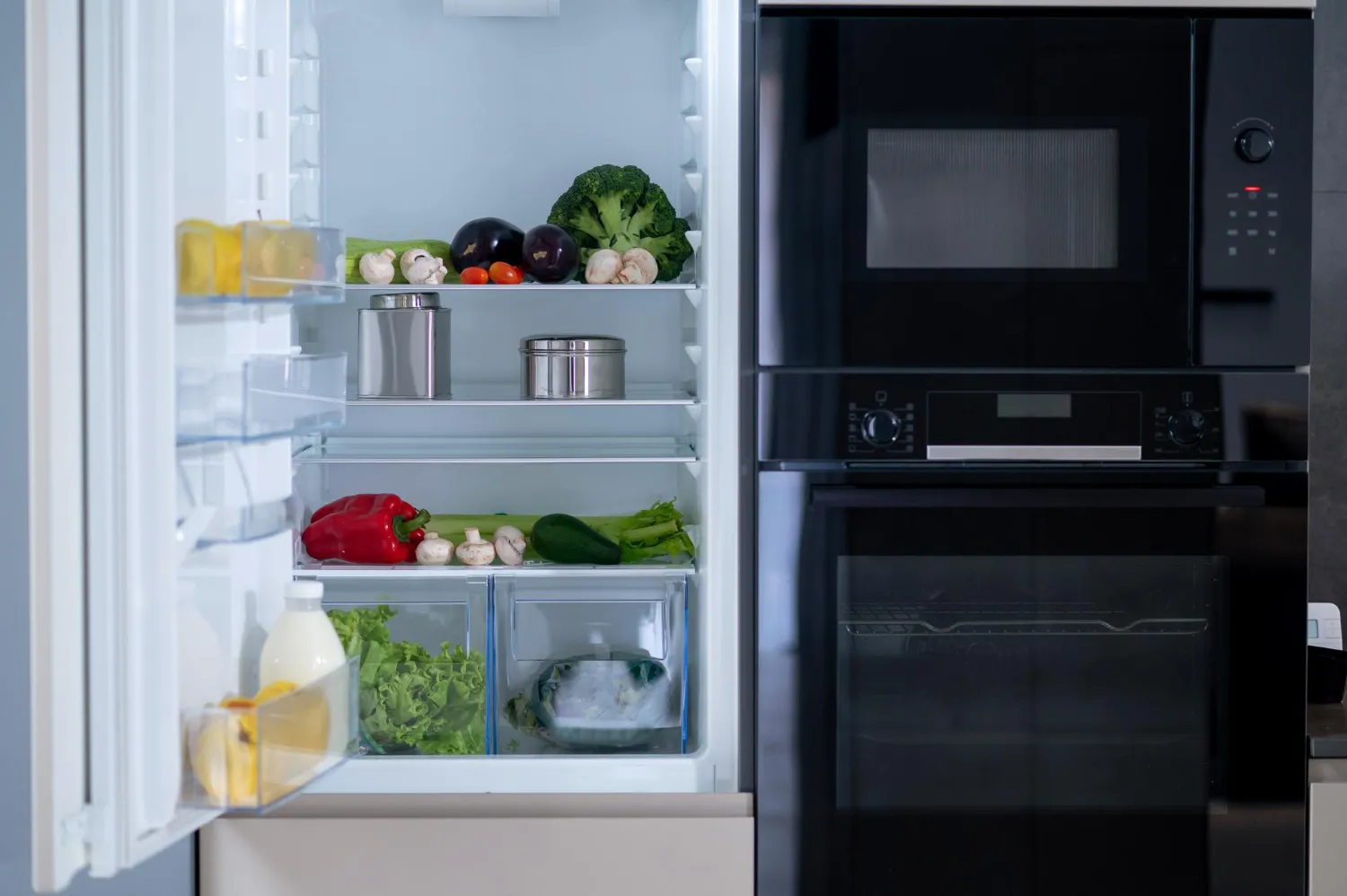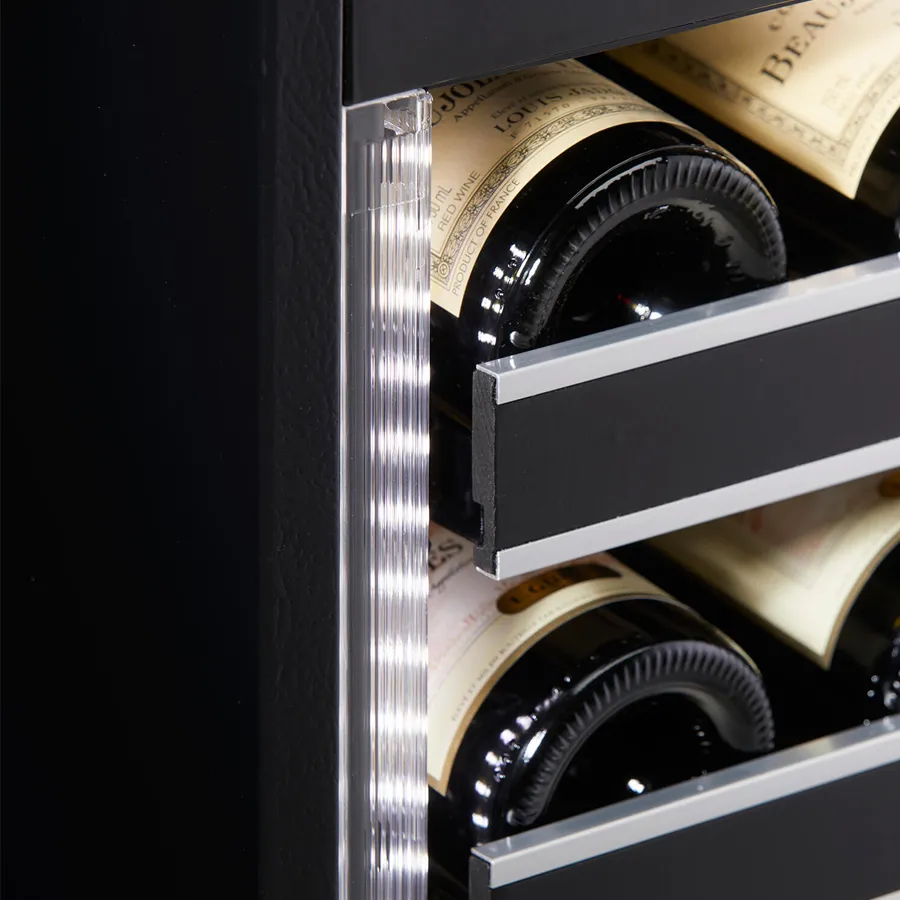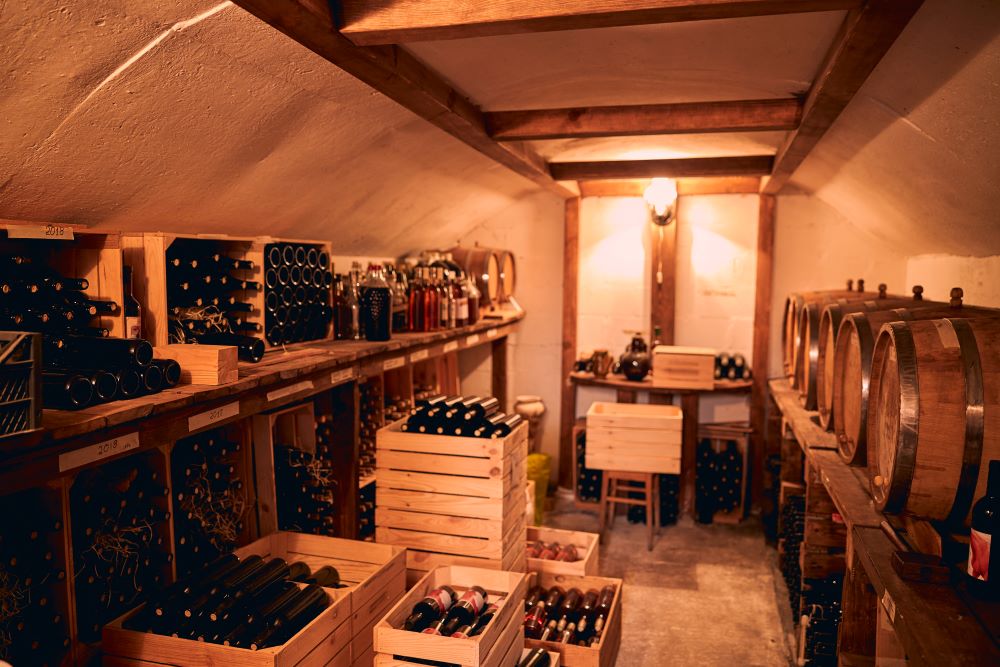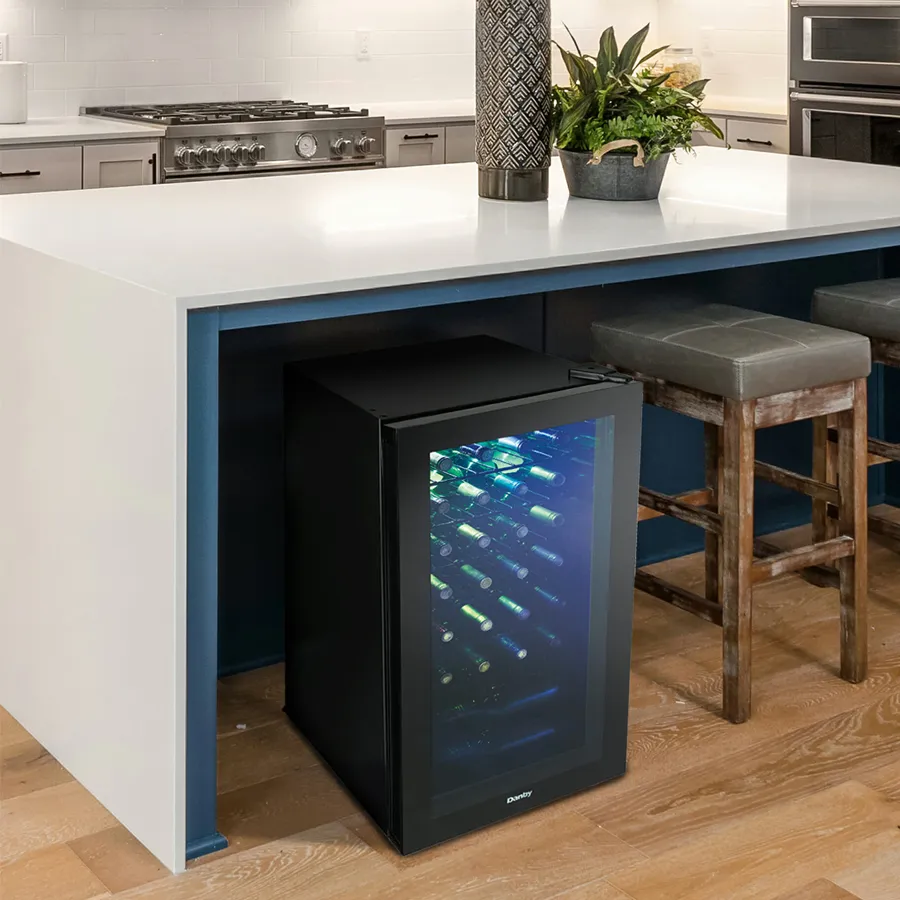If you’re a wine enthusiast or just love the occasional glass of fine vino, you likely understand the importance of proper storage to maintain its taste and quality. And when it comes to wine coolers, there are two main options to consider: built-in and freestanding. In this article, we will delve into the distinctions between these two types of wine coolers, discussing their features, benefits, and considerations to help you make an informed decision.
What is Built-in Wine Cooler
Built-in Wine Cooler is designed to compact, simple, low heat, and noiseless especially for use in small spaces. The cooler includes a front vent located under the wine cooler door that channels heat forward away from the unit without affecting the space behind. With the design, you can build the wine cooler into Space existing counters and cabinetry.
=> Read more: Single Door vs Double Door Wine Cooler: Which Better?
PROS and CONS of Built-in Winecooler:
- Pros: compact, simple desgin, low heat, noiseless…
- Cons: lack of Mobility, design is fixed, small capacity, difiiculty to install, difficulty in maintenance…
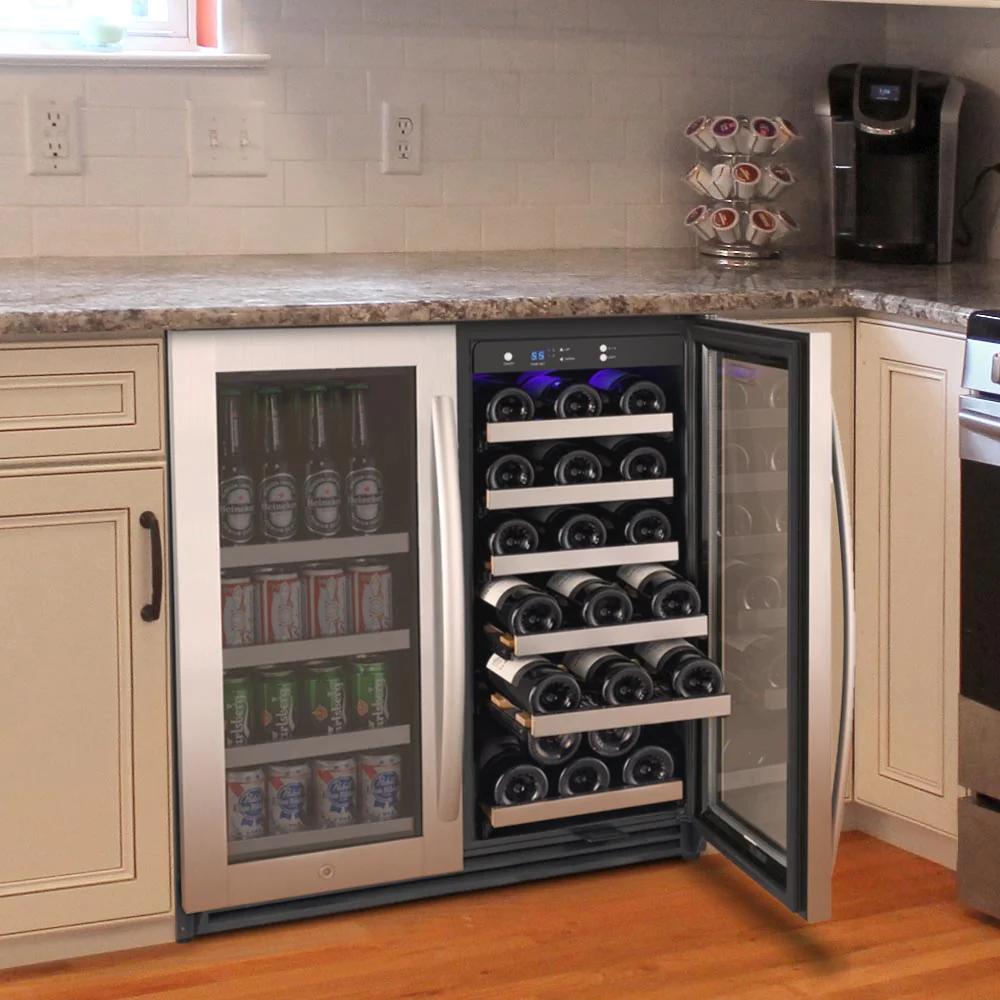
Built-in This small, simple, heat-efficient, and silent wine cooler is designed for small spaces. An under-door front vent sends hot air away from the wine cooler and the area behind it.
What is Freestanding Wine Cooler
A Freestanding Wine cooler is a cooler that stands on its own and just slides into place next to some cabinets or against a wall. It’s has been designed to stand alone with a back vent to avoid over-heating. A freestanding wine cooler is a great option if you have a space that has plenty of air circulation such as the living room or an entertainment room. You can install it where you like.
PROS and CONS of Freestanding winecooler:
- Pros: easy to install, easily be moved, easy in maintenance, customize the design …
- Cons: easily damaged, take extra space…
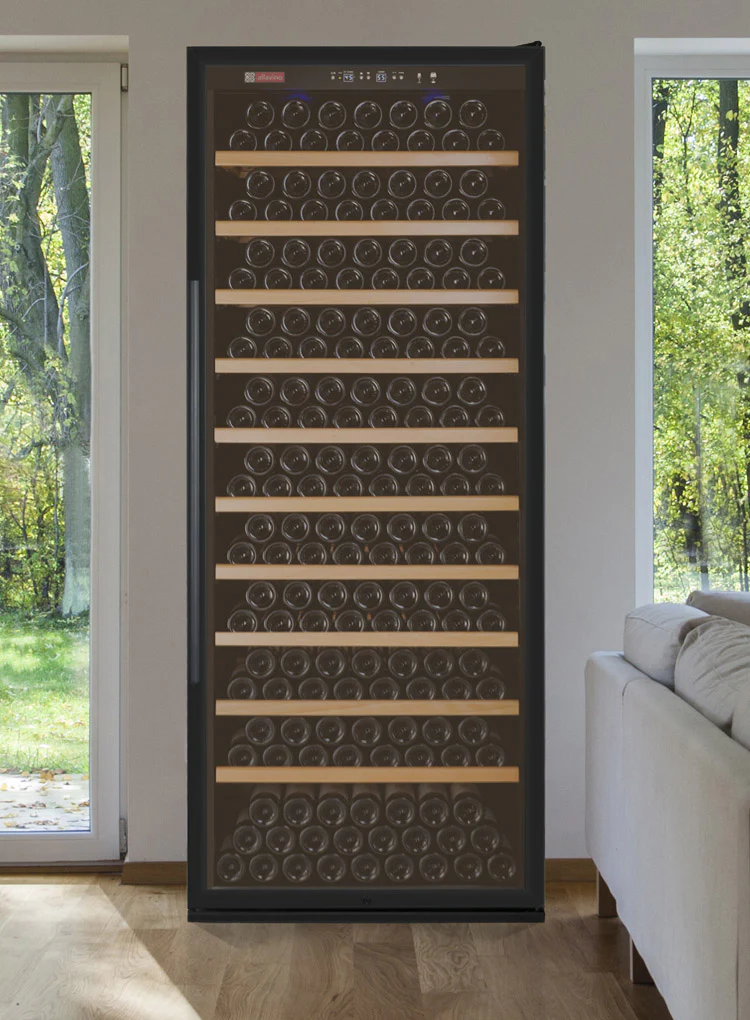
A wine cooler that stands alone can be mounted against a wall or next to cabinets. It stands alone and has a back vent to cool it.
What Difference between Built-in wine coolers VS Freestanding Wine Coolers
The differences between the two is essential in making an informed decision for your cooling needs. Knowing the differences in features and installation requirements can help you make the right choice for your specific needs.
| Freestanding Refrigeration | Built-in Refrigeration |
| Can be placed anywhere in the room | Designed to fit seamlessly into cabinetry |
| Offer flexible installation options | Provide a sleek, integrated look |
| Generally more affordable | Often more expensive but add value to the kitchen |
| Require proper ventilation space around the unit | Do not need additional ventilation space |
| Suitable for temporary or rented spaces | Perfect for permanent or custom-built kitchens |
- Air Vent: Built-in Winecooler designed to include a front vent located under the wine cooler door. Freestanding Winecooler designed to include a back vent to avoid over-heating.
- Desgin: Built-in Winecooler is often fix designed quite compact for use in a small space. Freestanding Wine Coolers often have more beautiful designs with many options customize personal.
- Capacity: Freestanding Wine Coolers Have Larger Capacity than Built-in Wine Cooler.
- Types of Cooling: Built-in Wine Cooler uses Thermoelectric Cooling technology. Freestanding Wine Coolers uses Compressor Cooling.
- Noise: Because using 2 different cooling technologies. So the Built-in wine cooler will be less noisy than Freestanding Wine Coolers.
- Price: the differences are small in comparison to the price gap.
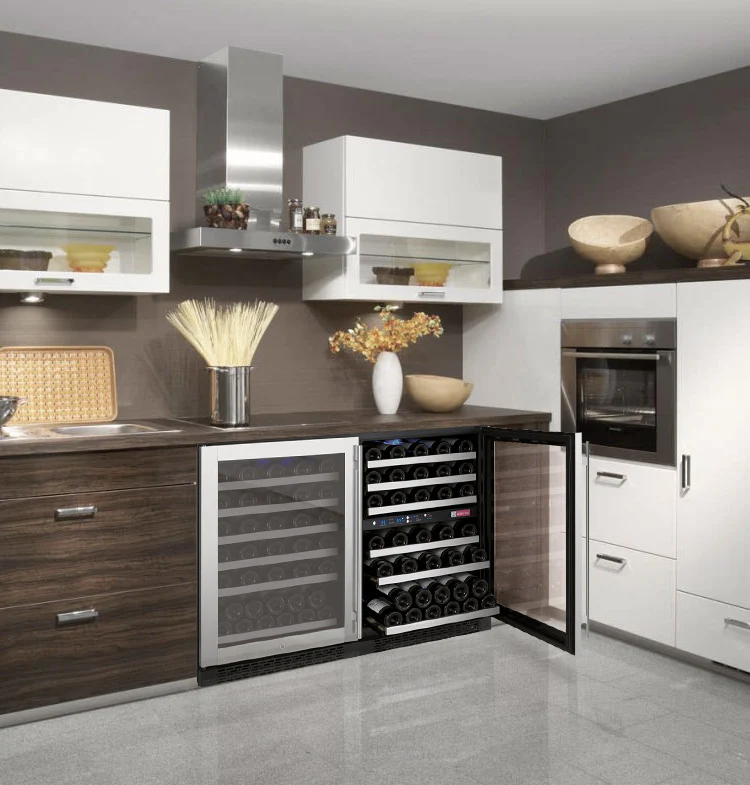
Making an informed cooling selection requires understanding the differences between the two.
Built-in vs Freestanding Which Cooler is better?
There is no the best, it depends on what your needs and where the place to Install your wine cooler will set the kind of unit you purchase.
- Fill Empty Space: If you’re planning on installing your wine cooler filling an empty cabinet space in the kitchen Or a small space under cabinet, then it’s best to go with a built-in wine cooler unit because these appliances are designed to fit directly into small, under-the-counter spaces. Built-in wine cooler is better for you.
- Place anywhere you want: If you’re planning on place your wine cooler anywhere at what you want, A freestanding wine cooler is just what it sounds like. Freestading winecooler is better.
- Love personal customize the design: If you want to customize design of the wine cooler according to your personal needs. then freestanding wine cooler is suitable for you.
- Noiseless: If you want your Winecooler to be noiseless, choosing built-in wine cooler with thermoelectric Cooling technology is a good option.
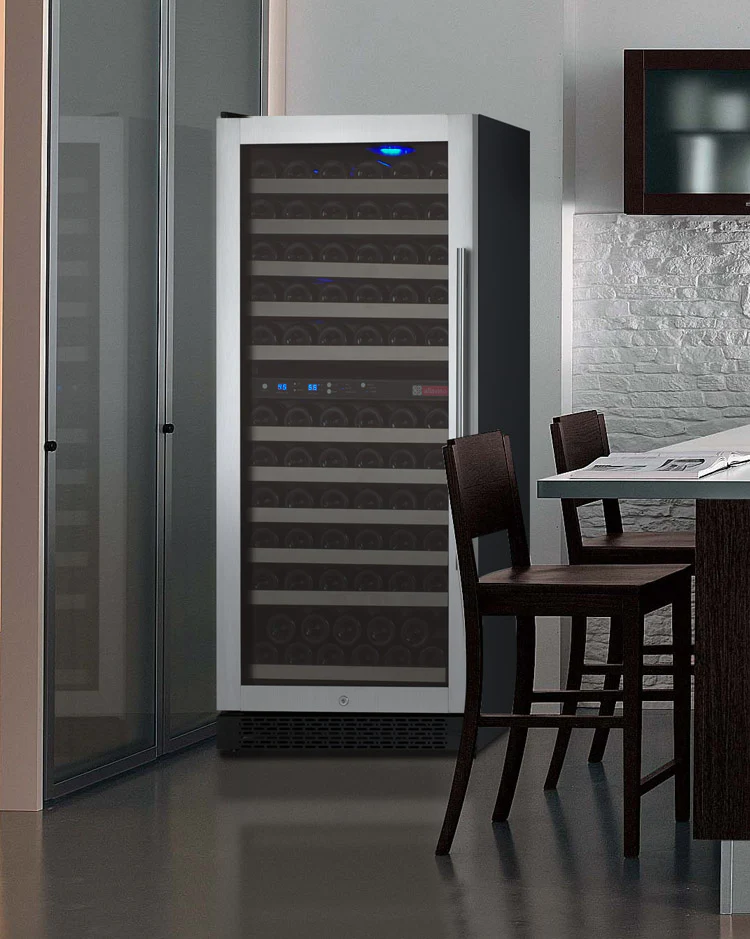
Conclusion
Your individual requirements and tastes should be the deciding factors between freestanding and built-in wine, beverage, and bar refrigerators. People who want to relocate or redecorate their area often could benefit from freestanding units due to their mobility and adaptability. However, for individuals who value aesthetics and have a specific area for their refrigeration needs, built-in units offer a smooth and integrated appearance. To choose the right choice for your house or business bar, think about things like room, money, and style. No matter what you decide, a high-quality refrigerator will keep your drinks cold and ready to drink whenever you choose.
FAQs About Built-in VS Freestanding Wine Coolers
In Short, What is the difference between freestanding and built-in wine, beverage, and bar refrigeration units?
Freestanding refrigeration units are standalone appliances designed to operate independently. They are not built into cabinetry or enclosed spaces and typically have ventilation requirements on the sides and rear. Built-in units, on the other hand, are designed to be integrated into cabinetry, providing a seamless and customized appearance.
Can freestanding refrigeration units be used as built-in or vice versa?
Freestanding units are not recommended to be used as built-in because they may lack proper ventilation when placed in enclosed spaces. Built-in units usually have front-venting designs suitable for integration into cabinetry, ensuring proper airflow and cooling efficiency.
Do freestanding or built-in units require special ventilation or installation considerations?
Freestanding units require proper ventilation around the sides and rear, as they dissipate heat from these areas. Built-in units, with front-venting designs, need adequate airflow within the cabinetry or surrounding space. Proper ventilation is crucial for both types to ensure optimal performance and prevent overheating.

